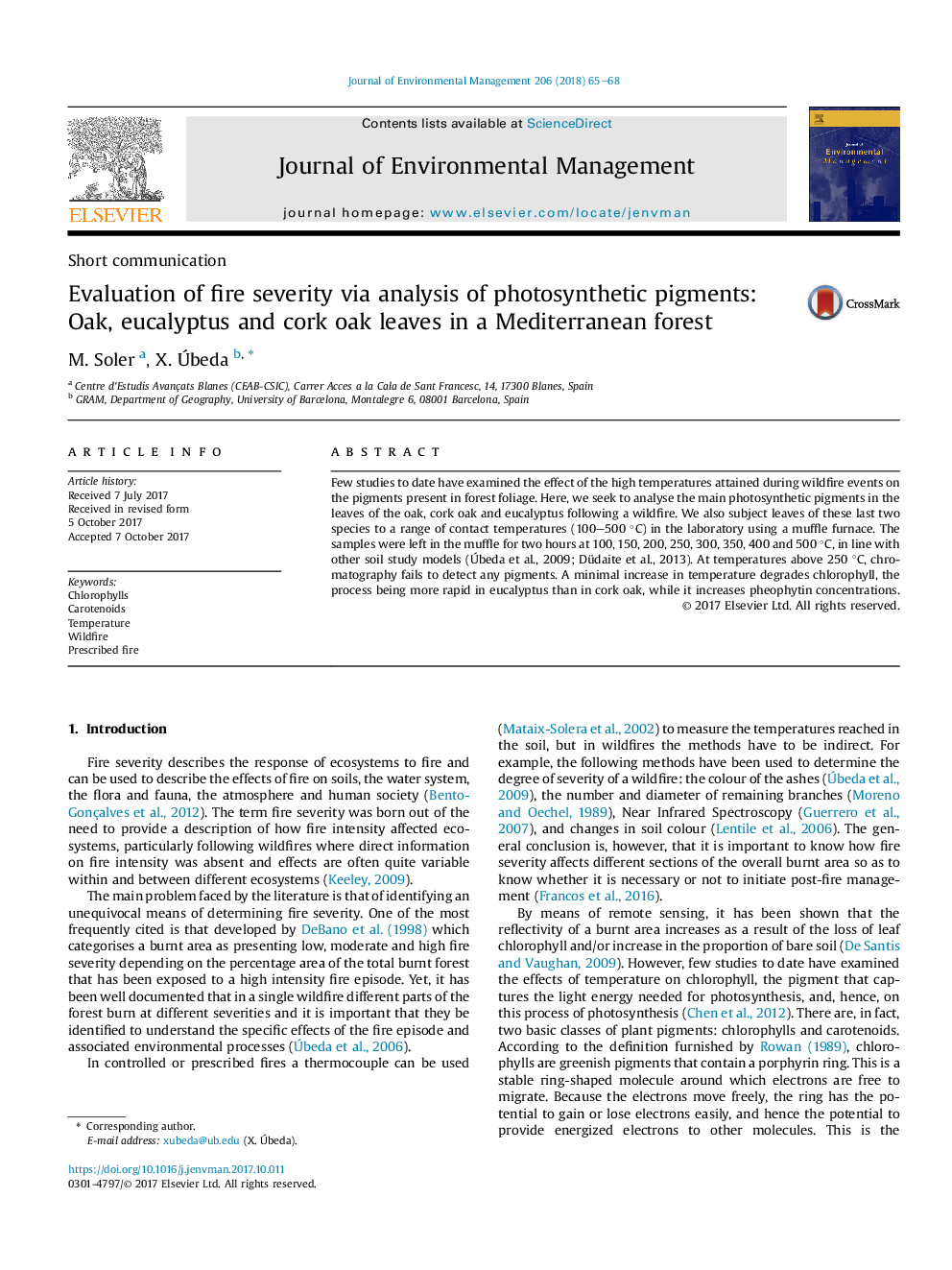| Article ID | Journal | Published Year | Pages | File Type |
|---|---|---|---|---|
| 7478572 | Journal of Environmental Management | 2018 | 4 Pages |
Abstract
Few studies to date have examined the effect of the high temperatures attained during wildfire events on the pigments present in forest foliage. Here, we seek to analyse the main photosynthetic pigments in the leaves of the oak, cork oak and eucalyptus following a wildfire. We also subject leaves of these last two species to a range of contact temperatures (100-500 °C) in the laboratory using a muffle furnace. The samples were left in the muffle for two hours at 100, 150, 200, 250, 300, 350, 400 and 500 °C, in line with other soil study models (Ãbeda et al., 2009; Düdaite et al., 2013). At temperatures above 250 °C, chromatography fails to detect any pigments. A minimal increase in temperature degrades chlorophyll, the process being more rapid in eucalyptus than in cork oak, while it increases pheophytin concentrations.
Related Topics
Physical Sciences and Engineering
Energy
Renewable Energy, Sustainability and the Environment
Authors
M. Soler, X. Ãbeda,
